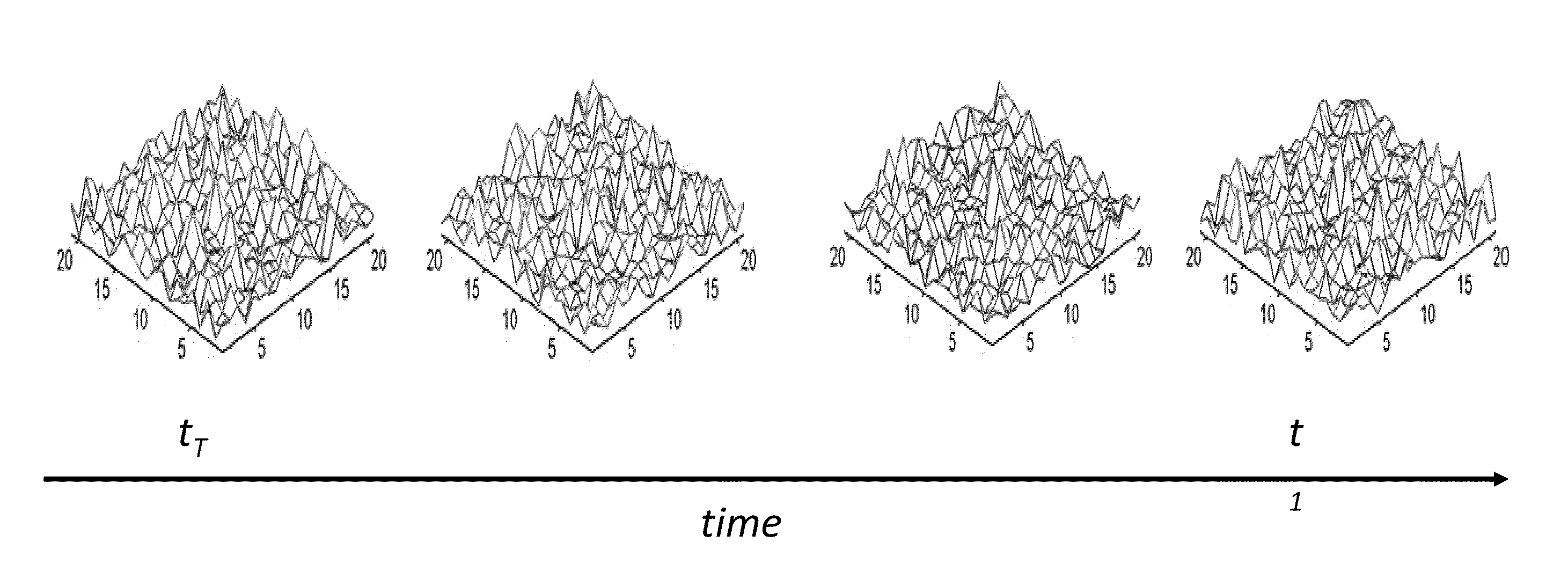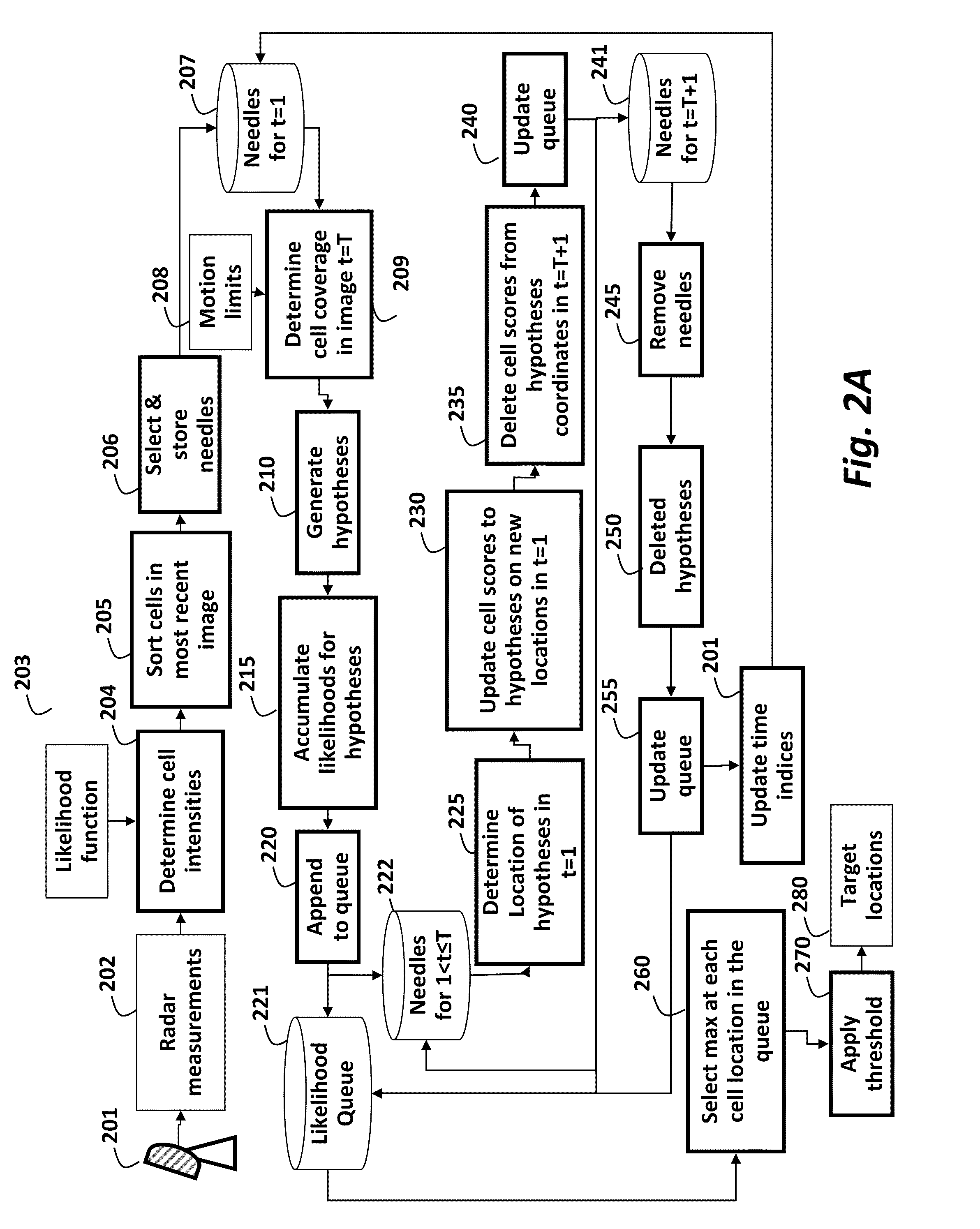Method for Detecting Small Targets in Radar Images Using Needle Based Hypotheses Verification
a technology of radar images and hypotheses, applied in the field of radar image detection, can solve the problems of increasing the cost of false alarms, noise, electromagnetic interference, etc., and avoiding the detection of small targets in noisy environments, so as to avoid the cost of increasing the number of false alarms
- Summary
- Abstract
- Description
- Claims
- Application Information
AI Technical Summary
Benefits of technology
Problems solved by technology
Method used
Image
Examples
Embodiment Construction
[0030]As shown in FIGS. 2A and 2B, the embodiments of the invention provide a method for detecting small targets from a sequence of radar images using sample based track-before-detection (TBD). The steps of the method can be performed in a processor connected to memory and input / output interfaces as known in the art.
[0031]A radar system 201 acquires radar measurements 202 in a form of a temporal sequence of images. At time t, an input image It for the method includes noise nt, clutter ct, and a target signal zt
It:zt+nt+ct, (1)
where clutter refers to signals returned from background objects such as ground, sea, atmospheric conditions, including rain, snow, hail, sand storms, clouds, and turbulence, and man-made objects such as buildings, etc. These constituents are assumed to be independent random variables. Noise is typically present in the communication channel, and appears as random variations superimposed on the received signal.
[0032]A state of the target at time t is St
st=[xt...
PUM
 Login to View More
Login to View More Abstract
Description
Claims
Application Information
 Login to View More
Login to View More - R&D
- Intellectual Property
- Life Sciences
- Materials
- Tech Scout
- Unparalleled Data Quality
- Higher Quality Content
- 60% Fewer Hallucinations
Browse by: Latest US Patents, China's latest patents, Technical Efficacy Thesaurus, Application Domain, Technology Topic, Popular Technical Reports.
© 2025 PatSnap. All rights reserved.Legal|Privacy policy|Modern Slavery Act Transparency Statement|Sitemap|About US| Contact US: help@patsnap.com



